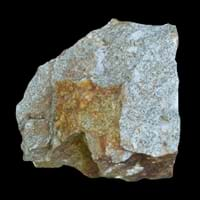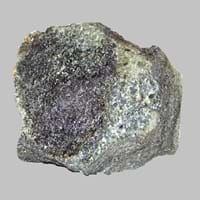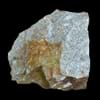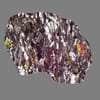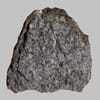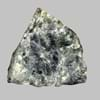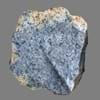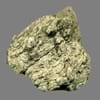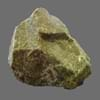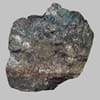Definition
Tonalite is a coarse-grained plutonic rock consisting mainly of sodic plagioclase, quartz, and hornblende or other mafic minerals with phaneritic texture
Amphibolite can be defined as a granular metamorphic rock which mainly consist of hornblende and plagioclase
Origin
Tonale, Italy
Unknown
Discoverer
Unknown
Alexandre Brongniart
Etymology
From Tonale Pass, northern Italy, + -ite1
From Amphibole + -ite
Class
Igneous Rocks
Metamorphic Rocks
Sub-Class
Durable Rock, Hard Rock
Durable Rock, Hard Rock
Group
Plutonic
Not Applicable
Other Categories
Coarse Grained Rock, Fine Grained Rock, Medium Grained Rock, Opaque Rock
Coarse Grained Rock, Medium Grained Rock, Opaque Rock
Texture
Phaneritic
Banded, Foliated, Massive
Color
Black, Brown, Light to Dark Grey, White
Black, Brown, Green, Grey
Durability
Durable
Durable
Scratch Resistant
Yes
Yes
Appearance
Banded and Foilated
Foliated
Interior Uses
Decorative Aggregates, Entryways, Flooring, Homes, Interior Decoration
Countertops, Decorative Aggregates, Entryways, Floor Tiles, Flooring, Homes, Hotels, Kitchens
Exterior Uses
As Building Stone, As Facing Stone, Paving Stone, Garden Decoration, Office Buildings
As Building Stone, As Facing Stone, Paving Stone, Office Buildings
Other Architectural Uses
Curbing
Curbing
Construction Industry
As Dimension Stone, Cement Manufacture, Cobblestones, Construction Aggregate, for Road Aggregate
As Dimension Stone, Building houses or walls, Cobblestones, Construction Aggregate, for Road Aggregate, Landscaping, Production of Glass and Ceramics, Roadstone
Medical Industry
Not Yet Used
Not Yet Used
Antiquity Uses
Artifacts, Sculpture
Artifacts, Sculpture, Small Figurines
Commercial Uses
Cemetery Markers, Creating Artwork
Cemetery Markers, Commemorative Tablets, Creating Artwork
Types
Dacite
Hornblendite
Features
Is one of the oldest rock, Typically speckled black and white.
Clasts are smooth to touch, Matrix variable, Surfaces are often shiny
Archaeological Significance
Monuments
Not Yet Used
Used
Famous Monuments
Not Applicable
Data Not Available
Famous Sculptures
Data Not Available
Data Not Available
Pictographs
Not Used
Not Used
Petroglyphs
Not Used
Not Used
Formation
When alkali feldspar is extracted from granite, it changes to granitoid and later, it becomes tonalite with quartz as major mineral.
Amphibolite is a coarse-grained metamorphic rock which forms by metamorphism of mafic igneous rocks like basalt and gabbro or from the metamorphism of clay-rich sedimentary rocks like marl or graywacke.
Mineral Content
Albite, Amphibole, Apatite, Biotite, Feldspar, Hornblade, Ilmenite, Magnetite, Manganese Oxides, Olivine, Plagioclase, Pyroxene, Quartz, Sulfides, Titanite, Zircon
Amphibole, Andalusite, Biotite, Calcite, Epidote, Garnet, Hornblade, Kyanite, Magnetite, Olivine, Plagioclase, Pyroxene, Staurolite, Wollastonite
Compound Content
NaCl, CaO, MgO, Silicon Dioxide
Aluminium Oxide, CaO, Iron(III) Oxide, FeO, Potassium Oxide, MgO, MnO, Sodium Oxide, Phosphorus Pentoxide, Silicon Dioxide, Titanium Dioxide
Types of Metamorphism
Burial Metamorphism, Cataclastic Metamorphism, Contact Metamorphism, Hydrothermal Metamorphism, Impact Metamorphism, Regional Metamorphism
Not Applicable
Types of Weathering
Biological Weathering, Chemical Weathering, Mechanical Weathering
Chemical Weathering, Mechanical Weathering
Types of Erosion
Wind Erosion
Chemical Erosion, Glacier Erosion, Sea Erosion, Wind Erosion
Grain Size
Medium to Fine Coarse Grained
Medium to Coarse Grained
Fracture
Conchoidal
Irregular to Conchoidal
Streak
Bluish Black
White to Grey
Porosity
Very Less Porous
Less Porous
Luster
Subvitreous to Dull
Vitreous to Dull
Cleavage
Not Available
Irregular
Specific Gravity
2.86-3
2.5
Transparency
Opaque
Opaque
Density
2.73 g/cm3
2.85-3.07 g/cm3
Specific Heat Capacity
Not Available
Resistance
Heat Resistant, Pressure Resistant, Water Resistant
Heat Resistant, Pressure Resistant, Wear Resistant
Deposits in Eastern Continents
Asia
Not Yet Found
Russia, Turkey
Africa
Egypt
Burundi, Djibouti, Eritrea, Ethiopia, Kenya, Madagascar, Rwanda, Somalia, South Africa, Sudan, Tanzania, Uganda
Europe
Finland, Germany, Italy, Romania, Sweden, Turkey
Germany, Greece, Iceland, Norway, Poland
Others
Not Yet Found
Not Yet Found
Deposits in Western Continents
North America
USA
Canada, USA
South America
Argentina, Bolivia, Chile, Colombia, Ecuador, Peru
Brazil
Deposits in Oceania Continent
Australia
New Zealand, South Australia, Western Australia
South Australia, Western Australia
